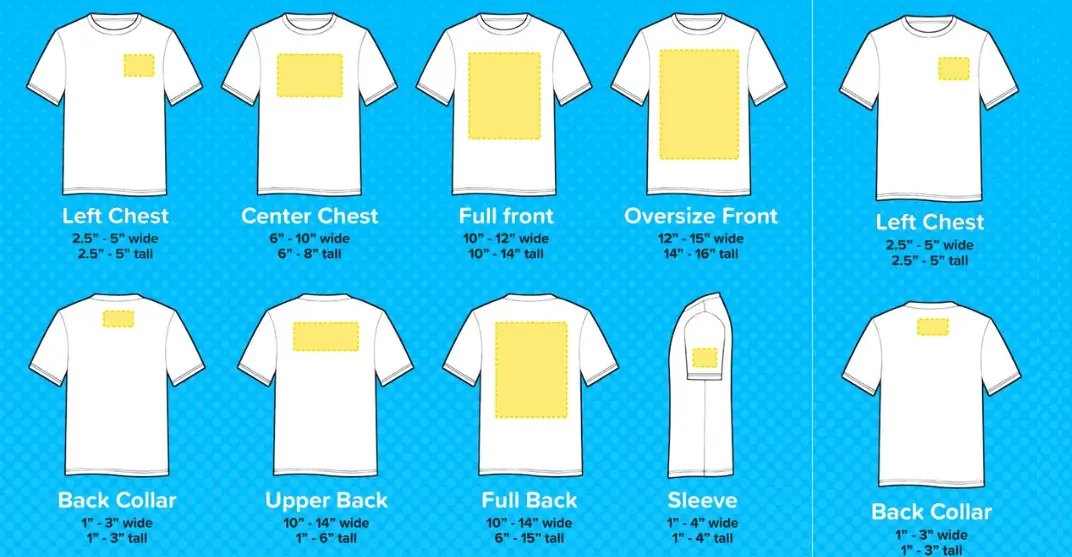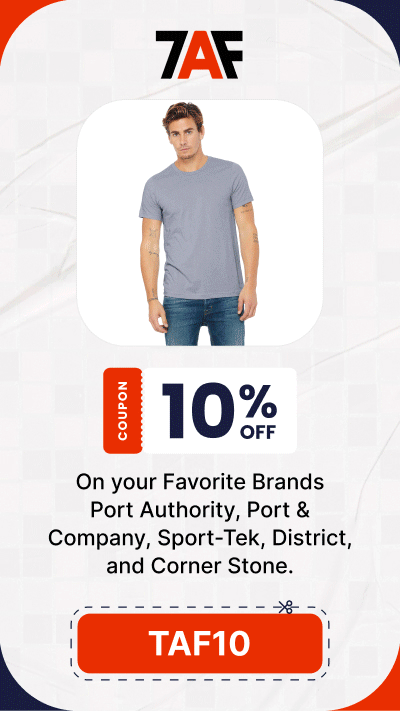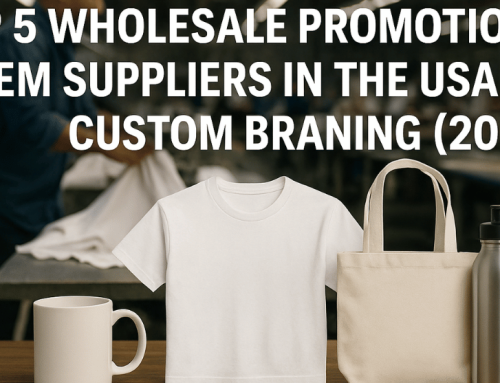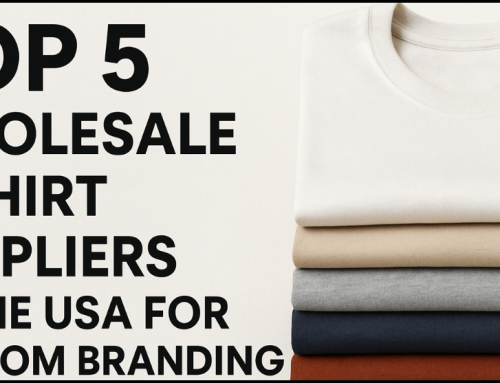
When it comes to branding, the size and placement of a logo on a shirt play a vital role. Whether you’re designing shirts for your business, team, or personal use, getting the logo size right ensures a professional and visually appealing outcome. In this blog, we’ll explore everything you need to know about logo size for shirts, including the best practices, guidelines for different placements, and tips for achieving the perfect look.
Why Logo Size Matters for Shirts
A logo on a shirt is more than just a design—it’s a representation of your identity. The size of the logo significantly impacts its visibility and aesthetic appeal. Here’s why choosing the right logo size matters:
- Professional Appearance: An appropriately sized logo enhances the shirt’s overall design and conveys a polished look.
- Brand Visibility: A well-sized logo ensures your brand is visible without overwhelming the shirt’s design.
- Comfort and Wearability: Logos that are too large can feel uncomfortable, especially for activewear or fitted garments.
- Balance and Symmetry: Proper sizing maintains visual balance and ensures the design complements the shirt’s style and fit.
Standard Logo Sizes for Shirt Placement
The ideal logo size varies depending on where you plan to place it. Here’s a breakdown of standard dimensions for common logo placements:
1. Left Chest
- Standard Size: 3.5” x 3.5”
- Best For: Corporate branding, team uniforms, and casual wear.
- Tips: Keep the logo small and aligned with the collar for a professional look.
2. Center Chest
- Standard Size: 6”–8” x 6”–10”
- Best For: Promotional t-shirts, event merch, and statement designs.
- Tips: This placement works best for bold logos or graphics intended to draw attention.
3. Full Front
- Standard Size: 10”–14” x 10”–12”
- Best For: Sportswear, team jerseys, and graphic tees.
- Tips: Avoid overcrowding the design area and maintain a comfortable margin from the edges.
4. Back Collar
- Standard Size: 1”–3” x 1”–3”
- Best For: Subtle branding or secondary logos.
- Tips: Use this placement for minimalistic designs to avoid clutter.
5. Upper Back
- Standard Size: 1”–6” x 10”–14”
- Best For Sports teams, organizations, and event apparel.
- Tips: Position the logo between the shoulder blades for maximum visibility.
6. Full Back
- Standard Size: 6”–15” x 10”–14”
- Best For: Large graphics or logos for bold branding.
- Tips: Ensure the design doesn’t extend too low for a balanced appearance.
7. Sleeves
- Standard Size: 1”–4” x 1”–4”
- Best For Sports teams, casual branding, or event sponsorships.
- Tips: Keep sleeve logos small to maintain comfort and avoid interfering with movement.
How to Determine the Best Logo Size for Your Shirt
Choosing the right logo size involves considering several factors. Here are the key steps to determine the ideal size for your needs:
1. Understand the Purpose
- Are you designing shirts for promotional events, corporate uniforms, or personal branding? The purpose determines the size and placement.
2. Consider the Shirt Type
- T-shirts, polos, and hoodies have different surfaces and style considerations. For example:
- Polos: Smaller logos work best on the left chest.
- Hoodies: Larger logos can be used on the back or center chest.
3. Factor in Shirt Sizes
- Adjust the logo size based on the shirt size. A logo that looks great on a small shirt might appear too small on a larger one.
- Small shirts: Opt for smaller logos to maintain proportionality.
- Larger shirts: Increase the logo size slightly for better visibility.
4. Balance Visibility and Comfort
- Large logos may look bold but can be uncomfortable for the wearer. Find a balance between impact and wearability.
5. Test the Placement
- Use templates or print a sample to visualize how the logo will look on the shirt. This helps avoid sizing errors and ensures the design aligns with your vision.
Tips for Perfect Logo Placement and Sizing
To achieve professional results, follow these expert tips for placing and sizing logos on shirts:
1. Use a T-Shirt Ruler
- T-shirt rulers are invaluable tools for ensuring precise logo placement. They help avoid placement that’s too close to the collar or off-center.
2. Leave Adequate Margins
- Maintain a comfortable distance from the collar, seams, and edges to avoid a cramped look.
3. Symmetry is Key
- Ensure the logo is perfectly aligned, especially for center chest or back placements. Use measuring tools for accuracy.
4. Test Different Sizes
- Print the logo in various sizes and hold it against the shirt to find the best fit.
5. Know Your Printing Method
- Certain printing techniques, like screen printing or embroidery, may affect the appearance of the logo. Choose a size compatible with the chosen method.
Common Mistakes to Avoid When Choosing Logo Sizes
While designing shirts, avoid these common pitfalls to ensure a polished final product:
- Overwhelming Designs: Logos that are too large can dominate the shirt and detract from its overall appeal.
- Misaligned Placement: Off-center or uneven placement can make the design look unprofessional.
- Ignoring Shirt Style: A logo that works for a t-shirt might not suit a polo or hoodie. Adjust accordingly.
- Inconsistent Sizes: Ensure uniformity when printing multiple shirts to maintain a cohesive brand image.
- Poor Contrast: Choose logo sizes that stand out against the shirt color and fabric texture.
Popular Printing Techniques for Logos on Shirts
The printing method you choose can influence the logo size and placement. Here are some common techniques:
- Screen Printing: Ideal for bold, vibrant logos with larger dimensions.
- Embroidery: Best suited for smaller logos, such as left chest or sleeve placements.
- Heat Transfer: Offers flexibility for both small and large logos.
- Direct-to-Garment (DTG): Allows for intricate designs and is suitable for a center chest or full-back logos.
Best Practices for Logo Sizing Across Shirt Styles
- For men’s t-shirts and women’s t-shirts, medium to large logos suit center chest or full-front designs for bold visibility. Smaller logos on the left chest create a subtle, professional look.
- Polos are best suited for small logos, providing a refined and professional appearance. Positioning the logo on the left chest ensures a consistent and polished look.
- Hoodies are ideal for larger logos, especially on the back or center chest for maximum impact. Ensure logos are placed away from pockets or seams for a clean and balanced design.
- Sports jerseys work well with bold logos on the back or sleeves for standout visibility. Make sure the logo placement doesn’t interfere with numbers or names for a clean, professional look.
Top Shirt Brands for Logo Designing at The Apparel Factory
Here are some ideal shirt brands for logo designing available at The Apparel Factory:
1. Gildan
- Why Choose Gildan?
- Known for their affordability and quality, Gildan shirts provide a smooth surface ideal for printing logos.
- They offer a variety of styles, including 100% cotton, blends, and moisture-wicking options, which are great for screen printing and heat transfers.
- Best Options for Logo Design:
- Gildan Ultra Cotton T-Shirts
- Gildan Softstyle T-Shirts (perfect for detailed logos)
2. Bella + Canvas
- Why Choose Bella + Canvas?
- Renowned for their soft, premium fabrics and trendy fits, these shirts work well for logos requiring vibrant colors and intricate designs.
- Their combed and ring-spun cotton fabric is excellent for direct-to-garment (DTG) printing.
- Best Options for Logo Design:
- Bella + Canvas Unisex Jersey T-Shirts
- Bella + Canvas Triblend T-Shirts (for modern, subtle branding)
3. Next Level Apparel
- Why Choose Next Level Apparel?
- Offers ultra-soft and durable shirts that ensure logos look sharp and last long.
- Ideal for high-quality logo designs with a fashion-forward appeal.
- Best Options for Logo Design:
- Next Level Apparel 3600 Premium T-Shirts
- Next Level Apparel CVC T-Shirts (perfect for screen printing or embroidery)
4. Port & Company
- Why Choose Port & Company?
- Affordable, durable shirts with a wide range of color options, making them great for uniform branding.
- Works well with most printing techniques, including heat transfer and embroidery.
- Best Options for Logo Design:
- Port & Company Core Cotton Tees
- Port & Company Long Sleeve T-Shirts
5. Red Kap
- Why Choose Red Kap?
- Specifically designed for workwear, Red Kap shirts are durable and professional.
- Perfect for embroidered logos on work uniforms.
- Best Options for Logo Design:
- Red Kap Industrial Work Shirts
- Red Kap Button-Down Shirts
6. Champion
- Why Choose Champion?
- As a trusted athletic brand, Champion offers high-quality shirts with a sporty appeal, ideal for team or event branding.
- The thicker fabric ensures logos stand out, whether printed or embroidered.
- Best Options for Logo Design:
- Champion Cotton T-Shirts
- Champion Raglan Tees
7. Augusta Sportswear
- Why Choose Augusta Sportswear?
- Offers sports and activewear shirts that are perfect for bold logos and team branding.
- Moisture-wicking and performance fabrics work well with heat transfers and screen printing.
- Best Options for Logo Design:
- Augusta Sportswear Performance Tees
- Augusta Sportswear Jerseys
By selecting the right shirt brand and fabric, you can ensure that your logo looks professional, durable, and visually appealing, making your designs stand out on any garment.
Conclusion
The right logo size for shirts can elevate your branding and leave a lasting impression. Whether you’re designing shirts for a corporate event, sports team, or personal project, understanding the nuances of logo sizing and placement is crucial. By following the guidelines and tips outlined in this blog, you can achieve a polished and professional look that reflects your brand’s identity.
We offer bulk wholesale shirts perfect for laser etching, screen printing services, appliqué service, and heat transfer techniques to suit your specific needs. Take the time to test, measure, and choose the best printing method to bring your design to life. A well-sized logo not only enhances the shirt’s aesthetics but also ensures comfort and wearability. Start your shirt branding journey with The Apparel Factory today and create designs that truly stand out!
Published on:
December 5, 2024




